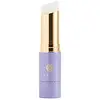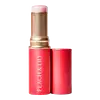What's inside
What's inside
 Key Ingredients
Key Ingredients

 Benefits
Benefits

 Concerns
Concerns

No concerns
 Ingredients Side-by-side
Ingredients Side-by-side

Diisostearyl Malate
EmollientOctyldodecanol
EmollientPolyisobutene
Synthetic Wax
AbrasiveCopernicia Cerifera Wax
Glycerin
HumectantCamellia Japonica Seed Oil
EmollientButyrospermum Parkii Butter
Skin ConditioningGlyceryl Glucoside
HumectantSqualane
EmollientTremella Fuciformis Polysaccharide
Emulsion StabilisingAlpha-Glucan Oligosaccharide
CleansingGlucose
HumectantCollagen Extract
Skin ConditioningPanax Ginseng Root Extract
EmollientHordeum Distichon Extract
Skin ProtectingHouttuynia Cordata Extract
Skin ConditioningPrunus Persica Leaf Extract
EmollientBifida Ferment Filtrate
Skin ConditioningVitis Vinifera Fruit Extract
Skin ConditioningArtemisia Vulgaris Extract
Skin ConditioningPanthenol
Skin ConditioningTremella Fuciformis Extract
HumectantHydrolyzed Sodium Hyaluronate
Skin ConditioningSodium Hyaluronate
HumectantHydrolyzed Hyaluronic Acid
HumectantHyaluronic Acid
HumectantSodium Hyaluronate Crosspolymer
HumectantPalmitoyl Tripeptide-1
Skin ConditioningAcetyl Hexapeptide-8
HumectantTripeptide-1
Skin ConditioningCopper Tripeptide-1
Skin ConditioningAcetyl Tetrapeptide-5
HumectantPalmitoyl Pentapeptide-4
Skin ConditioningHexapeptide-9
Skin ConditioningNonapeptide-1
Skin ConditioningDipeptide-2
Skin ConditioningLecithin
EmollientRosa Canina Seed Extract
EmollientWater
Skin ConditioningHelianthus Annuus Seed Oil
EmollientAdenosine
Skin ConditioningTocopherol
AntioxidantButylene Glycol
HumectantHibiscus Rosa-Sinensis Flower Extract
HumectantSantalum Album Extract
Cleansing1,2-Hexanediol
Skin ConditioningEthylhexylglycerin
Skin ConditioningCaprylyl Glycol
EmollientPhellodendron Amurense Bark Extract
Skin ConditioningChlorella Ferment
Skin ConditioningPolyglyceryl-10 Oleate
Skin ConditioningPentylene Glycol
Skin ConditioningMica
Cosmetic ColorantTitanium Dioxide
Cosmetic ColorantTitanium/Titanium Dioxide
Cosmetic ColorantTin Oxide
AbrasiveCI 77491
Cosmetic ColorantDiisostearyl Malate, Octyldodecanol, Polyisobutene, Synthetic Wax, Copernicia Cerifera Wax, Glycerin, Camellia Japonica Seed Oil, Butyrospermum Parkii Butter, Glyceryl Glucoside, Squalane, Tremella Fuciformis Polysaccharide, Alpha-Glucan Oligosaccharide, Glucose, Collagen Extract, Panax Ginseng Root Extract, Hordeum Distichon Extract, Houttuynia Cordata Extract, Prunus Persica Leaf Extract, Bifida Ferment Filtrate, Vitis Vinifera Fruit Extract, Artemisia Vulgaris Extract, Panthenol, Tremella Fuciformis Extract, Hydrolyzed Sodium Hyaluronate, Sodium Hyaluronate, Hydrolyzed Hyaluronic Acid, Hyaluronic Acid, Sodium Hyaluronate Crosspolymer, Palmitoyl Tripeptide-1, Acetyl Hexapeptide-8, Tripeptide-1, Copper Tripeptide-1, Acetyl Tetrapeptide-5, Palmitoyl Pentapeptide-4, Hexapeptide-9, Nonapeptide-1, Dipeptide-2, Lecithin, Rosa Canina Seed Extract, Water, Helianthus Annuus Seed Oil, Adenosine, Tocopherol, Butylene Glycol, Hibiscus Rosa-Sinensis Flower Extract, Santalum Album Extract, 1,2-Hexanediol, Ethylhexylglycerin, Caprylyl Glycol, Phellodendron Amurense Bark Extract, Chlorella Ferment, Polyglyceryl-10 Oleate, Pentylene Glycol, Mica, Titanium Dioxide, Titanium/Titanium Dioxide, Tin Oxide, CI 77491
 Reviews
Reviews

Ingredients Explained
These ingredients are found in both products.
Ingredients higher up in an ingredient list are typically present in a larger amount.
Butylene Glycol (or BG) is used within cosmetic products for a few different reasons:
Overall, Butylene Glycol is a safe and well-rounded ingredient that works well with other ingredients.
Though this ingredient works well with most skin types, some people with sensitive skin may experience a reaction such as allergic rashes, closed comedones, or itchiness.
Learn more about Butylene GlycolEthylhexylglycerin (we can't pronounce this either) is commonly used as a preservative and skin softener. It is derived from glyceryl.
You might see Ethylhexylglycerin often paired with other preservatives such as phenoxyethanol. Ethylhexylglycerin has been found to increase the effectiveness of these other preservatives.
Pentylene glycol is typically used within a product to thicken it. It also adds a smooth, soft, and moisturizing feel to the product. It is naturally found in plants such as sugar beets.
The hydrophilic trait of Pentylene Glycol makes it a humectant. As a humectant, Pentylene Glycol helps draw moisture from the air to your skin. This can help keep your skin hydrated.
This property also makes Pentylene Glycol a great texture enhancer. It can also help thicken or stabilize a product.
Pentylene Glycol also acts as a mild preservative and helps to keep a product microbe-free.
Some people may experience mild eye and skin irritation from Pentylene Glycol. We always recommend speaking with a professional about using this ingredient in your routine.
Pentylene Glycol has a low molecular weight and is part of the 1,2-glycol family.
Learn more about Pentylene GlycolSodium Hyaluronate is hyaluronic acid's salt form. It is commonly derived from the sodium salt of hyaluronic acid.
Like hyaluronic acid, it is great at holding water and acts as a humectant. This makes it a great skin hydrating ingredient.
Sodium Hyaluronate is naturally occurring in our bodies and is mostly found in eye fluid and joints.
These are some other common types of Hyaluronic Acid:
Learn more about Sodium HyaluronateSqualane is an emollient that helps the skin hold onto moisture. It's an oily liquid that occurs naturally in certain types of fish and plant oils.
Because squalane boosts hydration in the skin, it also comes with plenty of benefits: it is an antioxidant and can help fight free radicals and skin damage. Squalane is also found to have a detoxifying effect when applied.
Squalane comes from squalene, which occurs naturally within the sebum of our skin. It is one of the oils our skin produces to keep itself hydrated. Squalane is the hydrogenated version of squalene and has a longer shelf life.
Research shows that squalane is non-irritating (even at 100% concentration).
In general, it's a fantastic ingredient. It does a great job at hydrating the skin, and it's suitable for those with sensitive skin.
The source of squalane may impact malassezia / fungal acne. This is because olive oil derived squalane can contain impurities such as fatty acids and plant waxes. Sugarcane derived squalane is recommended for anyone with malassezia concerns.
Is squalane vegan?
This depends on the source. Squalane can be derived from both plants and animals. Most squalane used in skincare comes from plants.
Please note: the source of squalane is only known if disclosed by the brand. We recommend reaching out to the brand if you have any questions about their squalane.
Read more about squalene with an "e".
Is squalane an oil?
Squalane is often called an oil, but it’s technically not; it’s a hydrocarbon, meaning it’s only made of carbon and hydrogen, unlike true oils which are triglycerides made of fatty acids and glycerol.
The term “oil-free” isn’t regulated, so companies can define it however they want. Some exclude all oils, while others just avoid mineral oil or comedogenic oils.
While some people avoid oils thinking they cause breakouts, the right kind of oil (or oil-like ingredient like squalane) can actually help balance and hydrate your skin. It’s worth testing out simple oils or squalane to see what works best for your skin.
Learn more about SqualaneTocopherol (also known as Vitamin E) is a common antioxidant used to help protect the skin from free-radicals and strengthen the skin barrier. It's also fat soluble - this means our skin is great at absorbing it.
Vitamin E also helps keep your natural skin lipids healthy. Your lipid skin barrier naturally consists of lipids, ceramides, and fatty acids. Vitamin E offers extra protection for your skin’s lipid barrier, keeping your skin healthy and nourished.
Another benefit is a bit of UV protection. Vitamin E helps reduce the damage caused by UVB rays. (It should not replace your sunscreen). Combining it with Vitamin C can decrease sunburned cells and hyperpigmentation after UV exposure.
You might have noticed Vitamin E + C often paired together. This is because it is great at stabilizing Vitamin C. Using the two together helps increase the effectiveness of both ingredients.
There are often claims that Vitamin E can reduce/prevent scarring, but these claims haven't been confirmed by scientific research.
Learn more about TocopherolWater. It's the most common cosmetic ingredient of all. You'll usually see it at the top of ingredient lists, meaning that it makes up the largest part of the product.
So why is it so popular? Water most often acts as a solvent - this means that it helps dissolve other ingredients into the formulation.
You'll also recognize water as that liquid we all need to stay alive. If you see this, drink a glass of water. Stay hydrated!
Learn more about Water